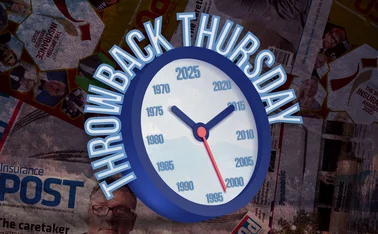
Captives: Testing captive strength

The captive sector has emerged relatively unscathed from the financial crisis, reflecting a conservative approach to investing and strong levels of governance. But now is not the time to be complacent, explains Clive James.
The financial crisis, which began with the collapse of the US sub-prime market and became a contagion that spread throughout the banking system, was not an explicit insurance event. Nevertheless, a number of commercial (re)insurers were affected, resulting in significant investment losses, while a minority faced billion-dollar write-downs as a result of their forays into more exotic waters.
For captive insurers, while the crisis was clearly a major event, it did not put undue stress on their business model; the conservative investment approach of the vast majority of captives held them in good stead throughout the financial upheaval. Even those with a greater proportion of equities were able to limit their losses by standing firm with their investments and riding out the worst of the turbulence.
So what does this tell us about the inherent strength of the captive structure? A captive's primary objective is to preserve principal so that it is able to pay substantiated claims from its parent company. This fact alone dictates an investment approach that is unadventurous and they further protect solvency by purchasing layers of reinsurance protection where necessary.
Sturdy structures
The advantages of the captive in the financial maelstrom extend beyond the investment side of the balance sheet. At the height of the credit crunch, when the commercial insurance market was warning of capacity constraints on capital-intensive lines of business - in particular peak risks such as Gulf of Mexico energy - captives did not have this concern.
Captives are generally well capitalised by their parent companies and these vehicles' managers on the whole maintained this strong level of solvency during the crisis through a combination of effective risk transfer (reinsurance purchasing) and a prudent investment approach. This enabled them to continue offering ample capacity throughout the crisis. Such an approach also shielded captives from pricing volatility that afflicted property catastrophe and claims-hit casualty classes, such as professional indemnity for financial services.
Looking beyond the context of the financial crisis, the strength of the captive has been enhanced by a greater focus on corporate governance and transparency and heightened awareness of the benefits of risk management. A spate of regulatory reforms, such as the development of Solvency II in Europe, has prompted a number of domiciles to strengthen oversight of their financial institutions, including captive insurers.
Those at the forefront of captive growth have been modernising their regulatory frameworks, such as Guernsey's 'Own Solvency Capital Assessment'. Furthermore, the Organisation for Economic Co-operation and Development's tax haven grey list has also upped the ante for jurisdictions to avoid their being seen as second-class domiciles.
Such regulatory pressures have encouraged a more active approach to risk management while a growing emphasis on enterprise risk management has helped to strengthen overall corporate resilience. It is therefore not surprising to learn that the number of rated captives has never been so high, reflecting the sector's robustness.
Captives have had to adapt in response to the crisis: strong standards of corporate governance, with most captive boards now including non-executive directors, have helped steer them through it. Some have opened up to third-party business or been required to produce even greater levels of disclosure. Others came under pressure to return capital to their parents during the worst point of the illiquid economy, or to pay more to their fronting insurers. They dealt responsibly with these potential strains on their resources while insisting on high levels of security from their own counterparties.
Lessons to learn
Despite their exemplary performance during and after the financial crisis, there are lessons to be learned - not just by the captive community.
Before the crisis, many captive owners had spent little time overseeing their investments, preferring to outsource this responsibility to an investment manager. While most captives have remained with their investment managers, the crisis has emphasised the importance of having more control of assets. Due diligence surrounding both the choice of investment manager and the investment allocation remains an essential aspect of captive management.
Another key lesson was a reassessment of the value of ratings and a discovery that AAA-rated products can sometimes lose their value overnight. For a long time, investments had only gone one way. The crisis was a timely reminder that markets can fall as well as rise and that the buyer should always beware.
Perhaps the most valuable message for captives to take from the dislocation is the continued importance of adopting a long-term approach to investing where possible. It can be argued that the asset-liability matching of captives has been too conservative. Now, more than ever, captives should take an aggressive stance to how they match the liability side of their balance sheets.
It would be a mistake in underwriting long-tail lines to take too cautious an approach to investing, particularly at a time when parent companies are looking to their captives to generate more value. The financial crisis was a shock to the global economy but captives should not run scared. Their structure was put to the test and vindicated many times over. As we emerge from recession, it is time for captive owners to demonstrate that they can achieve a better return while continuing to preserve their principal funds.
Clive James is a consultant at Kane.
Only users who have a paid subscription or are part of a corporate subscription are able to print or copy content.
To access these options, along with all other subscription benefits, please contact info@postonline.co.uk or view our subscription options here: http://subscriptions.postonline.co.uk/subscribe
You are currently unable to print this content. Please contact info@postonline.co.uk to find out more.
You are currently unable to copy this content. Please contact info@postonline.co.uk to find out more.
Copyright Infopro Digital Limited. All rights reserved.
As outlined in our terms and conditions, https://www.infopro-digital.com/terms-and-conditions/subscriptions/ (point 2.4), printing is limited to a single copy.
If you would like to purchase additional rights please email info@postonline.co.uk
Copyright Infopro Digital Limited. All rights reserved.
You may share this content using our article tools. As outlined in our terms and conditions, https://www.infopro-digital.com/terms-and-conditions/subscriptions/ (clause 2.4), an Authorised User may only make one copy of the materials for their own personal use. You must also comply with the restrictions in clause 2.5.
If you would like to purchase additional rights please email info@postonline.co.uk







